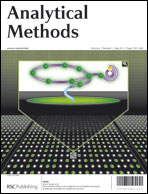Biodetection formats, such as DNA and antibody microarrays, are valuable tools in the life sciences, but for some applications, the detection limits are insufficient. A straightforward strategy to obtain signal amplification is the rolling circle amplification (RCA), an easy, isothermal, and enzymatic nucleic acid synthesis that has already been employed successfully to increase the signal yield for several single-analyte and multiplexing assays in conjunction with hybridization probes. Here, we systematically investigated the parameters responsible for the RCA driven signal amplification with fluorescent labels, such as the type of fluorophore chosen, labeling strategy, composition of reaction solution, and number of handling steps. In labeling strategies, post-synthetic labeling via a Cy3-hybridization probe was compared to the direct incorporation of fluorescent Cy3–dUTP and DY-555–dUTP into the nascent strand during synthesis. With our direct labeling protocol, the assay's runtime and handling steps could be reduced while the signal yield was increased. These features are very attractive for many detection formats but especially for point-of-care diagnostic kits that need to be simple enough to be performed by scientifically untrained personnel.

You have access to this article
 Please wait while we load your content...
Something went wrong. Try again?
Please wait while we load your content...
Something went wrong. Try again?


 Please wait while we load your content...
Please wait while we load your content...